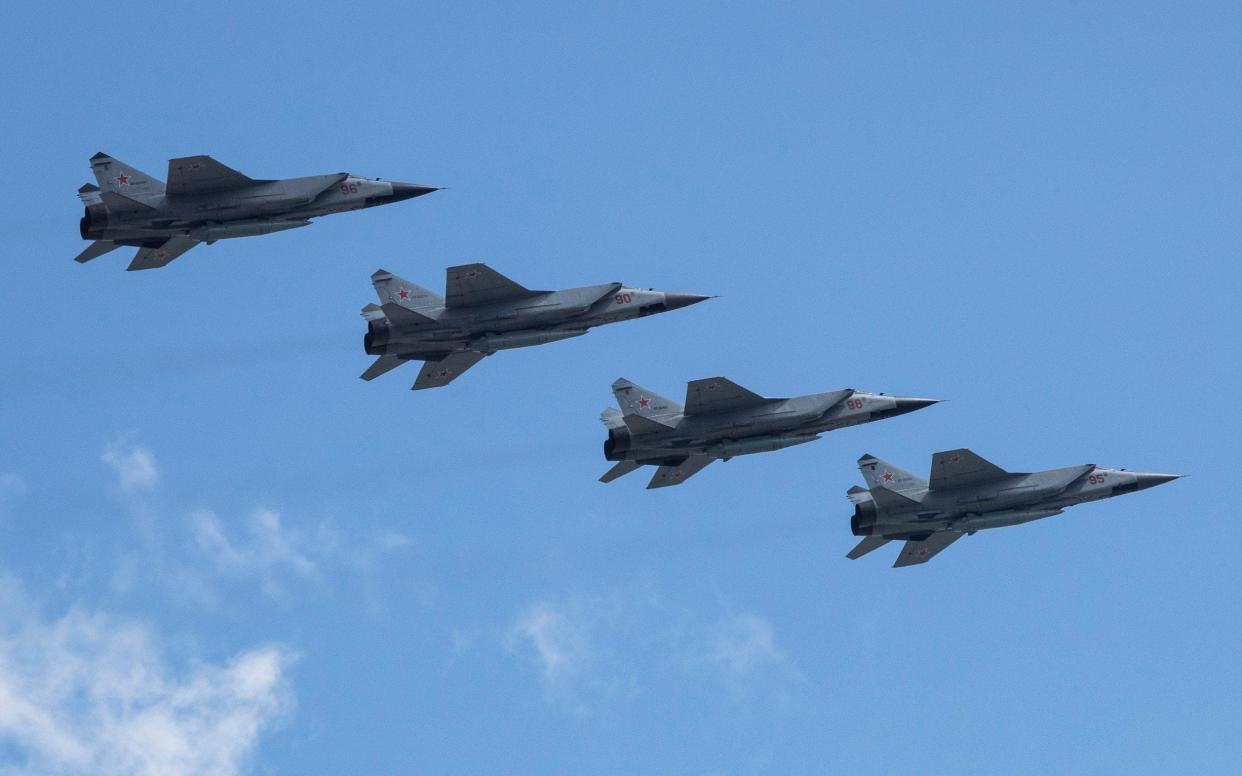Russian airpower could overwhelm Ukraine unless West steps in, experts warn

Russia could overwhelm Ukraine with airpower if the West does not supply defence systems and fighter jets, top military analysts have warned.
The West must “urgently bolster” Ukrainian air-defence capacity, including with American F-16 and F-18, and Swedish Gripen aircraft.
Russian pilots have been cautious throughout the war, so even a small number of Western fighters could have a major deterrent effect, according to the report by the Royal United Services Institute (Rusi).
It warns that Western military aid is focussed mainly on the ground war as Ukraine has been successful in holding back Russia’s air force.
However, “there is a real danger that this success leads to Western complacency about the threat that [Russian air power] can still pose to Ukrainian forces, infrastructure and cities if given an opening".
Speaking to the Telegraph, Justin Bronk, the report’s lead author, said F-16, F-18 and Gripens could offer Ukrainian fighter pilots “far superior radar performance and the ability to use far longer ranged and more capable Western air-to-air missiles” compared with the Soviet-made Su-27 and Mig-29 models Ukraine is currently operating.
“They are currently having to fly against modern Russian Su-35S, Su-30SM and Mig-31BM fighters/interceptors [which] completely outclass their jets on a technical level,” he said.
Throughout the war, Russian fighters have frequently been able to launch radar-homing air-to-air missiles at Ukrainian fighters from over 100km away.
In the first weeks of the war the deeply unequal radar and missile performance compared with Russian fighters, as well as being tactically outnumbered by up to 15:2 in some cases, forced Ukrainian pilots to fly extremely low to survive and fire their own weapons.
Aggressive Ukrainian tactics and skillful flying during the first days of the invasion led to several likely kills against Russian aircraft, the report says, although many Ukrainian fighters were shot down or damaged in the process.
The report notes Russian maps are often “decades out of date” making low-level flight at night very hazardous since obstacles are unlikely to be mapped.
Unable to accurately hit Ukrainian military units, the Russian air force defaulted to simply bombarding besieged cities as it had in Syria.
In early March, however, Russian surface-to-air missile (SAM) defences became much better coordinated.
The threat from long-range S-400 "Triumph" SAM systems based in Belarus and Crimea forced Ukrainian aircraft to fly at an extremely low altitude – below 100 ft – for most of their sorties on the northern and southern axes.
The threat from these long-range SAMs was compounded by the presence of a Russian "Podlet-K1" all-altitude radar in Belarus covering the Kyiv axis, and another in the south.
These mobile radar systems, introduced in 2018, allowed Russian forces to track Ukrainian jets and helicopters at altitudes as low as 15 ft at well over 150km, although the radar in the south, near Nova Kakovkha, was later destroyed.
Mr Bronk said: “The latest series of strikes on Ukrainian infrastructure are more of a sustainable threat than previous iterations as it now blends hundreds of cheap and numerous Iranian-supplied Shahed-136 loitering munitions to hit small targets, with larger and more expensive cruise missiles and ballistic missiles against large targets.
“This means Ukraine needs both advanced air defence systems like [the US-Norwegian] NASAMS and [German] IRIS-T to protect cities and infrastructure against cruise missiles, but also a lot of cheaper [shoulder-launched missiles] and radar-guided anti-aircraft guns to engage the Shaheds.”
In its latest estimate of Moscow’s combat aircraft losses, Ukrainian authorities say they have destroyed 277 Russian jets and 260 helicopters.

 Yahoo News
Yahoo News 
